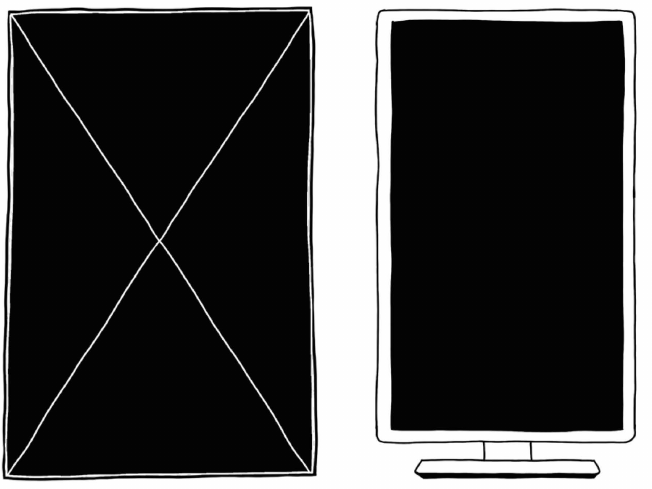
ARTIST STATEMENT by Karlee Rene
Bright Wings is a three-part work that engages with text from the first two lines of Gerard Manley Hopkins’s poem God’s Grandeur. The first piece in the triptych uses white thread, the second uses scorch marks, and the third uses genuine gold leaf. The typeface that forms the letters of the text is based on William Morris’s Golden Type created in 1890, the year after Hopkins’s death. The use of both this poem and Morris’s type represents an engagement with Victorian aesthetic and ecological concerns. The work takes its title from the final line of Hopkins’s poem, which focuses on the materiality of the Holy Ghost.
This work offers viewers an embodied experience of Hopkins’s poem. In providing an experiential element to the statement made by the opening lines of the poem, the work not only echoes Hopkins’s claim that the material world mediates divine presence, but names itself as one such manifestation – an example of matter ‘charged with the grandeur of God’. This encounter will, I hope, re-enchant the viewer’s experience of the material world. In revealing the domestic materials of fabric, flame, and ore as capable of bearing God’s presence, the work invites viewers to return to the mundane materials in their everyday life with increased sensitivity to their sacramental potential. Finally, the interrelationship of the three pieces is a representation of the way the three members of the Trinity work together to reveal and communicate.

ARTIST STATEMENT by Steve Dutton
What is revealed by a process of negation and obliteration? Might there be a presence of hiddenness?
Here I present one small painting on canvas (60cm x 80cm) alongside a stop motion animation of the accretion of paint and text on the surface of the canvas over a period of two-three months. Any linearity of the animation and the passing of time has been disrupted by mixing up all the individual frames. The painting is one of a series of ongoing paintings which follow the same process. In some, words are still visible, in others they are obliterated. It goes like this. First, lay down a stencilled text on the canvas (the text may take the form of a series of repetitions, aphorisms, mistakes, malapropisms, confessions, or glossolalia). Second, at some point in the process, overlay the text with varying mixtures of grey paint mixed with fluorescent colour in the form of four triangles. Repeat numerous times. The triangles might be suggestions of the folds on the back of an envelope in which something is sealed, or the forms might refer to a cancellation, or a hint at a deep perspective into a void, or out into the space in which the painting sits. On the one hand the colour wishes to be as bright as possible but is confounded and undone by the introduction of black. On the other hand, the black wants to be as black as possible but is confounded and undone by the introduction of fluorescence.

ARTIST STATEMENT by Sarah Howe
My practice explores expanded portraiture and self-portraiture, to produce wide-ranging outputs – from photography, sculpture, and written prose to large-scale multimedia installations concerned with articulating psychological space, materially, through the making and writing of spatialised personal histories in a bid to decentre dominant forms of knowing. Through narrative, storytelling and the physical making and remaking of space my practice seeks to imagine new architectures and cartographies of being in the world.
The works engage with individuals and communities to develop frameworks for presenting visual and spoken narratives, around themes of identity, empathy and health. Rooted in photography, my practice stands at the crossing between a material and a psychological landscape, in a reach to sculpt and navigate heightened inner states.
The video piece Dream Dream Dream focuses on the experience of revelation in isolation. Revelation, similarly to photographic practice, heightens the everyday to a spectacular mundane where objects and processes are given reverence through the lens of slow observation. Set against the backdrop of a south east London housing estate undergoing works in response to the ongoing cladding crisis here in the UK, audio transcripts are woven between the interruptions and reparations of a building in flux. The central character encounters a series of fragmented meditations on revelation that act as markers or ‘showings’ that reflect on love, repair, health, and attention.
Video transcript:
pinpricks across a surface illustrate my omission. an apparition. a figure gone frail a voice deepened by age left waiting some days the ringing in my ears melds with the sirens in the city, power tools, aeroplanes, my neighbours smoke alarm all crowd inside the cochlear. hidden, this clandestine spiral consumes rhythmic chunks of stray frequency spat out in sharp zaps as soon as my eyes close. I have been here for some time now. and I’ve been thinking a lot about the wound over the past year um and I’ve come to think of the wound as this open space more like a gash that allows light to go through it’s like the empty boat that needs to be filled somehow. you’re outward turned you’re looking you’re watching and that’s when revelation comes it isn’t quite dark the light somehow resists surrender to its own absence. it permeates the walls. humming in yellow it haunts. my body, cold, sinks into it. it is softly punctured by the beating amber sound the metallic taste dry copper wool to the mouth it’s a miracle really sarah yeah it’s quite weird it was just an outline of things I couldn’t even see clearly across the room and now of course it’s jus… oh I can see oo forever and it’s not a process that finishes It could also mean to veil again like revelairé To conceal again so it’s not just a matter of exposing something revealing something but also re vailing somethings so there is always this kind of dynamic between things which are brought to life but also concealed you know words are imprecise aren’t they? this is the problem you can’t you know it’s very difficult to find exactly the right words sometimes the real meaning you search for is sort of inbetween a sort of constellation of words or phrases But it’s a feeling of this is important this is key this is something that makes sense Don’t apply too much pressure And find every last piece Even the smallest place And that way you come to a sort of deeper understanding. I sit and think of all the words I’ve lost you are precious hang on to the space between them you are significant crackling across pixels, quartz time, you are valuable, of inestimable value a million tiny shards of you fractured presence in light leaks beaming onto skin burning up this trace of you enters my sights your life wrapped within me pupils dilate and draw sucking in the fractals of you and me within you two brings an essence to the world that can only happen through us infinite black holes expanding
RESEARCH COMMENTARY by Eric Studt
Revelation is communication by which a previously unarticulated – and perhaps inarticulable – mystery is made known. In a religious context, the inarticulable mystery is the divine. Religious thinkers have often used verbal or pictorial images from the everyday to open the receiver’s understanding to some aspect of the divine even as these images allow the receiver to appreciate the divine mystery at work in their everyday – an enchantment of the everyday. Visual art has sometimes been seen analogous to divine revelation in the following sense: using everyday sensory modes of expression, visual artworks can reveal otherwise hidden perspectives, perceptions, thoughts, and emotions. In the same way, Sarah Howe’s film lifts images of ordinary happenings in and around her
apartment during lockdown out of their usual context to allow the viewer to consider these often-overlooked occurrences and to reveal their sensory richness. Karlee Rene’s mixed medium work is a visual interpretation
of the first lines of Gerard Manley Hopkins’ poem God’s Grandeur, which recognises God’s glory concealed and revealed in nature. Divine revelation, while communicated in limited media such as words or visually
perceptible objects such as art or nature, can be an opening to infinite meaning and grandeur. Steve Dutton’s painting, which consists of painted words that have been concealed by layers of paint, emphasises the aspect
of revelation that has to do with hiddenness. Revelation is always partial and layered. Some aspects of revelation are concealed by the very media through which they are expressed.